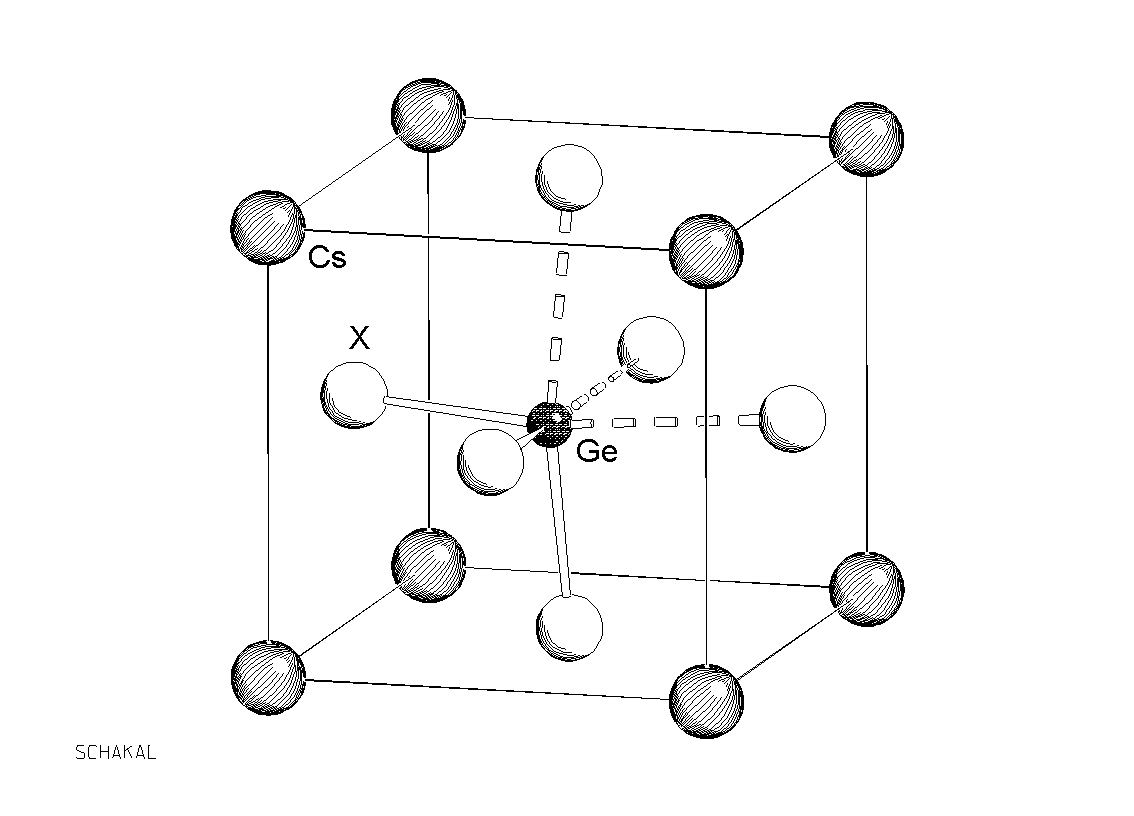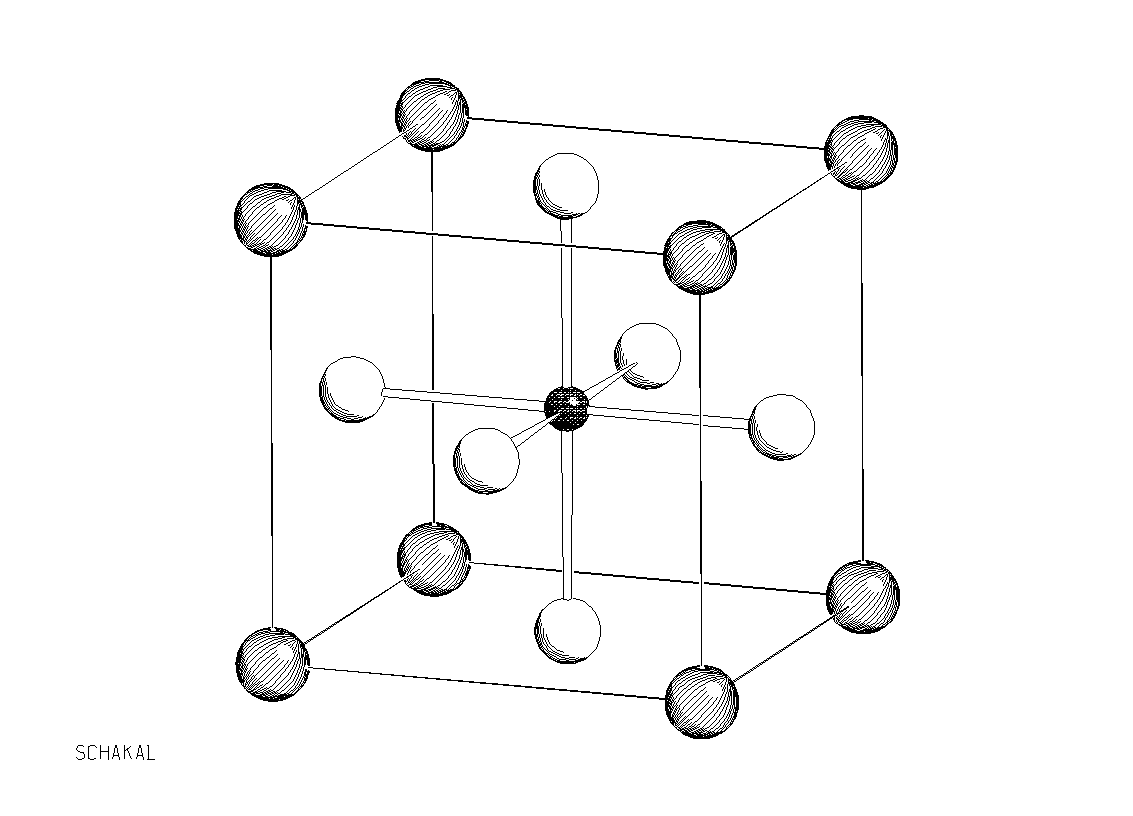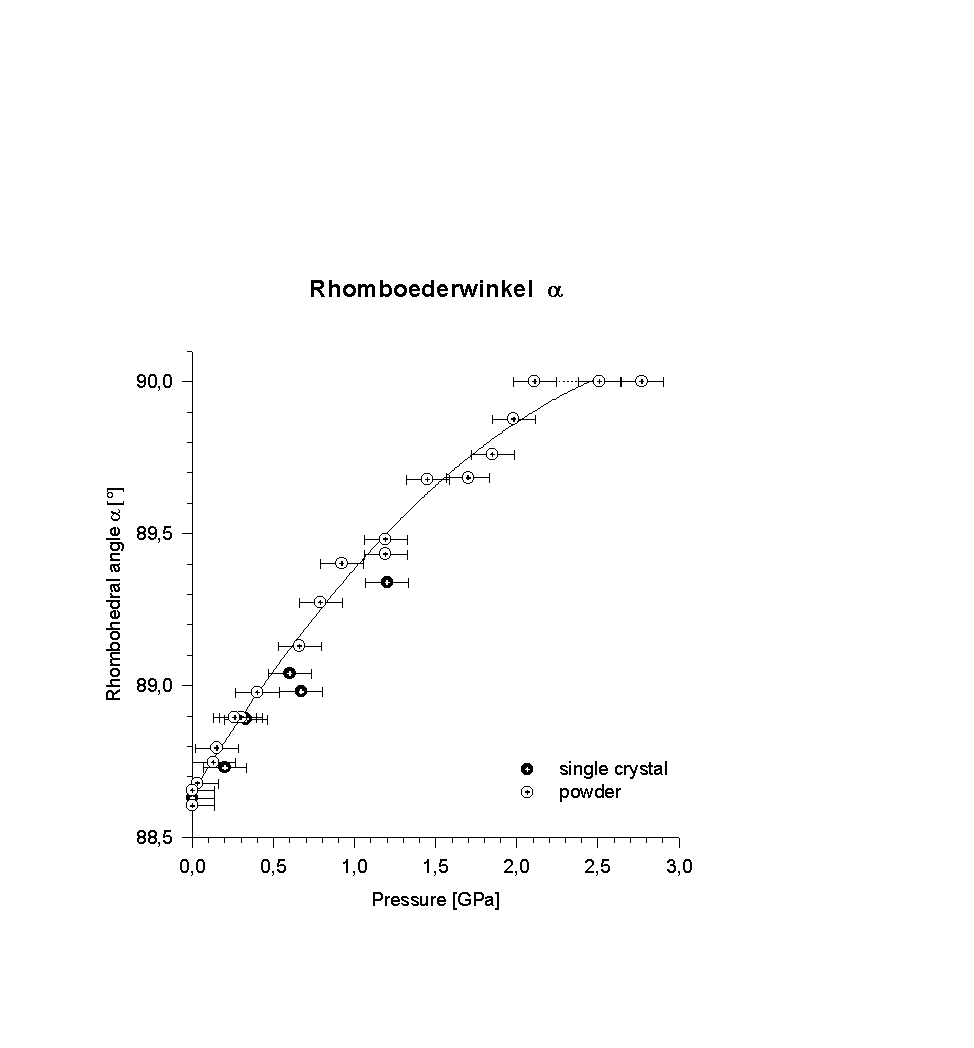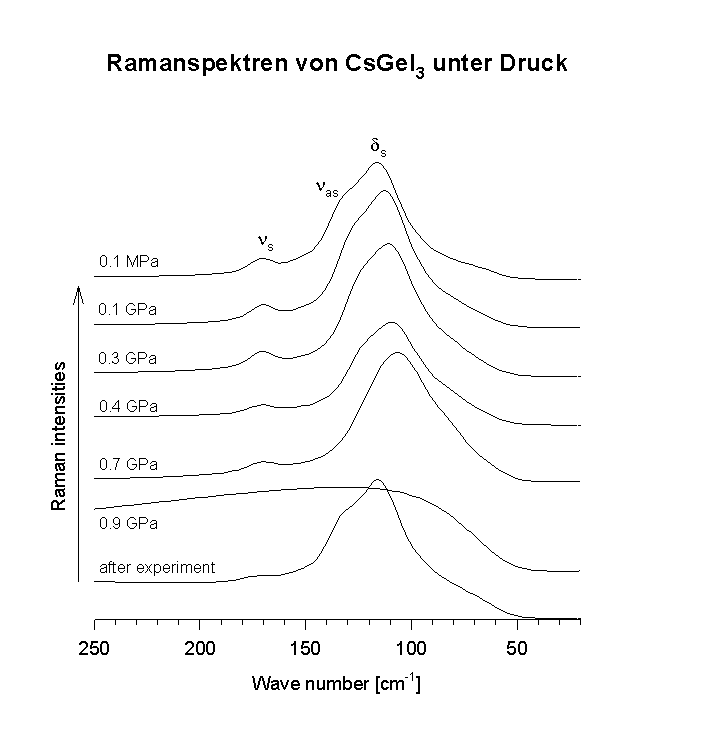

PRESSURE INDUCED PHASE TRANSITIONS OF CsGeI3
O. Albarski, H.W. Rotter and G. Thiele
Institut für Anorganische und Analytische
Chemie und Materialforschungszentrum FMF,
Albert-Ludwigs-Universität, Albertstr. 21, D - 79104 Freiburg,
Germany
E-Mail: alba@sapphire.chemie.uni-freiburg.de
Keywords: High pressure, phase transition,
iodogermanate, Raman spectra
The crystal structure of the cesium trihalogenogermanates can be described as a rhombohedrally distorted perovskite-like structure with Cs and X (X = Cl, Br, I) forming a slightly distorted cubic closest packing while Ge is found in the octahedral voids. The Ge atoms are shifted from the center of the octahedron towards a face of the coordination polyhedron (figure 1a) resulting in a [3+3]-coordination with three shorter and three longer Ge-X bonds. This distortion of the GeX6-octahedra can be explained by the stereochemical activity of the GeII 4s2 lone pair. All compounds show thermal, CsGeCl3 and CsGeBr3 also pressure induced phase transitions at 2.7 respectively 1.0 GPa [1, 2] to the ideal cubic perovskite with SG Pm3_m (figure 1b).
In continuation of these high pressure experiments we present
in this contribution investigations on the behaviour of the free
electron pair under high pressure by the means of Raman
spectroscopy, X-ray powder diffraction and single crystal
structure determination. The experiments were carried out in a
diamond anvil cell of the Merrill-Bassett type with prepressed
INCONEL gaskets together with polychlortrifluorethylen or
paraffin as pressure transmitting medium. The shift of the ruby
fluorescence was used for pressure determination.
 |
 |
| a) | b) |
Figure 1: Unit cell of CsGeX3 (X = Cl, Br, I) under
ambient conditions (a) and under high pressure (b)
Under ambient conditions CsGeI3 crystallizes with a = 5.983(3) A and a = 88.61(3)° in SG R3m (rhombohedral setting) with Ge-I bonds of 2.745(3) respectively 3.265(3) A [3].

Figure 2: Enlarging of the
rhombohedral angle of the unit cell of CsGeI3 under pressure

Figure 3: Raman spectra of
CsGeI3
under pressure
With increasing pressure the powder diagrams and single crystal investigations show a continuous enlarging of the rhombohedral angle until it becomes 90° at about 2.5 GPa (figure 2) so that above this pressure CsGeI3 occupies the ideal cubic perovskite structure (SG Pm3_m); the stereoactive lone pair has become a non-stereoactive inert pair. This continuous phase transition could be classified as a phase transition of higher order.
For the first time it was possible to receive Raman spectra of
this black compound by application of FT-Raman spectroscopy. At
ambient pressure the Ge-I vibrations can be observed in the
region from 100 to 200 cm-1.
With increasing pressure the wave number of the s
deformation vibration shifts to smaller wave numbers which
indicates an elongation of the shorter Ge-I bonds which is
in accordance with single crystal investigations. Between 0.7 and
0.9 GPa the Raman spectrum disappears (figure 3). Powder diagrams
and single crystal structure determinations at this pressure
however confirm that the rhombohedral symmetry still persists. So
it must be concluded that the change in the spectrum is not due
to symmetry change (rhombohedral cubic) but due to a closing of
the band gap while CsGeCl3 and
CsGeBr3 also show a strong
decrease of the band gap but no evidence for metallization [4, 5].